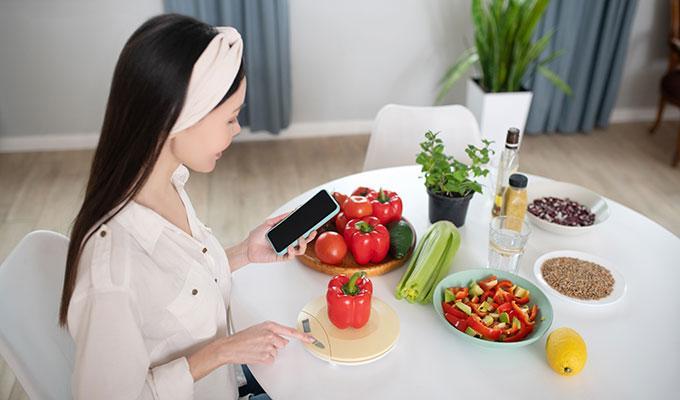Examples of Carbohydrate Foods
Check out some examples of serving sizes of carbohydrate foods. In real life this means:
- One, 1-ounce slice of bread
- 1 small (4 ounce) apple, orange, or pear
- 1/2 banana
- 1 small potato or 1/2 large potato
- 2 tablespoons peanut butter
- 1/3 cup cooked rice
- 1/2 English muffin, small bagel, or pita bread
- 2 rice cakes
- 1/2 cup cooked cereal, pasta, or bulgur
- 1 corn tortilla
- 8 ounces of milk
- 1/2 cup black beans or starchy vegetable like winter squash
- 1/2 cup ice cream
- 4 to 6 crackers
- 1 cup low-fat milk or yogurt
This can help when you want to eat out and need to eyeball portions so that you eat the number of servings that are right for you rather than eating everything you’re served. If it’s in a package, you can read the nutrition label, of course, but the skill of eyeballing portions, like any other skill, takes practice.
How to Eyeball Carbohydrate Portions
Viola Holmes, associate director of nutrition of the American Diabetes Association®, says that the best way to eyeball portions when you’re eating out is to measure them at home from time to time.
“Then you will be more confident with guesstimates when eating away from home,” she says. “You’ll have that visual image in your head.”
She advises to visualize the 1/2 cup and 1 cup measuring cups in your kitchen and what that may look like based on the foods you’ve selected. For instance, if you enjoy preparing whole wheat pasta at home, regularly measure 1/2 cup of it before putting it on your plate. It will help you develop a good image of what that looks like when you’re dining out. Likewise, weigh cooked proteins—chicken, beef, fish, shrimp—at home and pay attention to what those 2 to 3 ounces looks like.
Another approach is your own hand. A woman’s fist, says Holmes, can be a great guide to what a cup of food looks like. A cupped hand can be the equivalent of about half a cup. And the palm can equal 3 to 4 ounces.
Everyday items, like sporting equipment, a deck of cards, or a shot glass can also help you visualize portion sizes. Portion control expert Lisa Young, PhD, RDN, CDN, lists a variety of objects that can serve as three dimensional indicators of serving sizes. Think of a serving of 3 ounces of lean protein as the size of a deck of cards. A half cup of ice cream is half a baseball. Two tablespoons of salad dressing or olive oil is the size of a shot glass.
Use whatever images work for you to train your brain to measure portions as accurately as possible when you don’t have access to measuring tools or a scale.
Written by Caron Golden. Reviewed by Katy Walker, LCSW.







